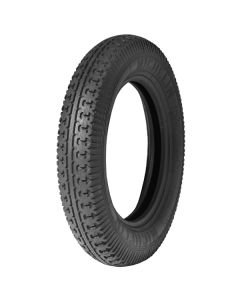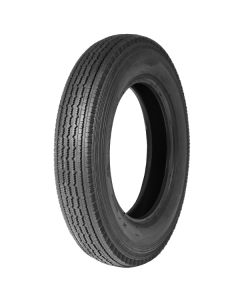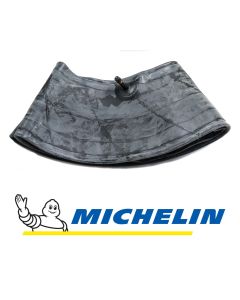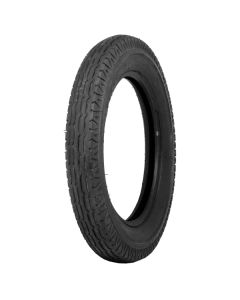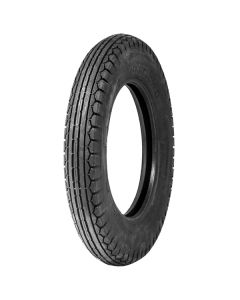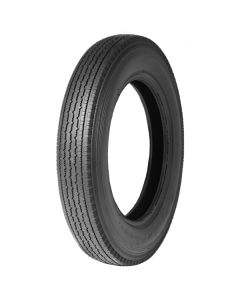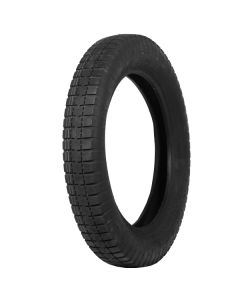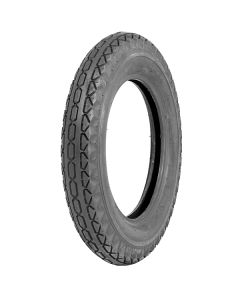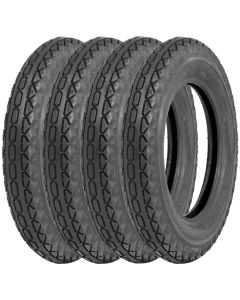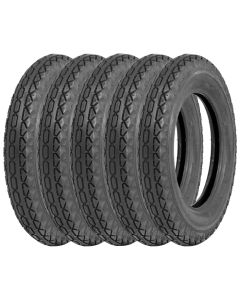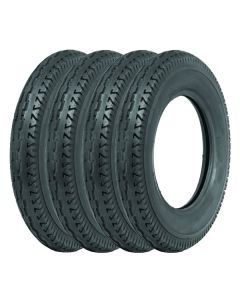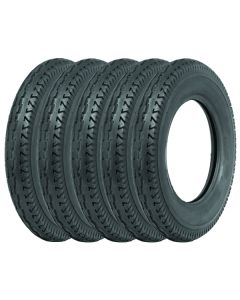Rolls Royce 20-25 Tyres

Rolls Royce 20-25 on 6.50/7.00 x 19 Ensign B5 Tyres
Rolls Royce 20-25 1929–1936
- The best tyres for a Rolls Royce 20/25 are the Michelin DR or the 6.50 x 19 Custom Classic.
- For the Rolls Royce 20/25 we suggest fitting the 5.25/6.00 x 19 Michelin D.R. as it gives excellent comfort and grip.
- The Custom Classic is nice and tall with the rounded side walls of a period balloon tyre giving excellent comfort and nice long legged gearing.
- There is also the 6.50/7.00 x 19 Ensign B5 which is a 1940s tread pattern, but has a good firm carcass.
- 20-25 wheels require innertubes, and the ideal Rolls Royce 20-25 innertube for these tyres is the 19/20H RET.
- For a 20/25 our suggested tyre pressures would be between 34psi and 40psi depending on the body.

Rolls Royce 20-25 on new 6.50/7.00 x 19 Ensign B5 Tyres at Longstone HQ
Rolls Royce 20/25 Tyre Choices Explained
There are currently 3 great choices of excellent tyres to suit a Rolls Royce 20/25. The choice you make should be determined by the usage of your car. A 20/25 was fitted with a 600 - 19 as standard.
The 5.25/6.00 x 19 Michelin Double Rivet is in actual fact a 6.00-19, in fact it is even on the large side for a 6.00-19 being 168mm wide, therefore perfect for a 20/25 as they do actually benefit from a larger tyre. The excellent build quality of a Michelin tyre gives us confidence, with the genuine period tread pattern and rounded carcass it looks perfect, but the carcass of a Michelin carcass always offers exceptional comfort and grip. We would suggest the Michelin will give the most grip and comfort of the 20/25 tyres we have on offer. We would suggest if fitting the Michelin you may need to a run at a higher tyre pressure than you had on other previous tyres.
The 6.50 x 19 Custom Classic tyre from Lucas, is again is a good tall period balloon tyre absolutely suited to a 20/25 Royce. They look fantastic on their the nice tall rounded side wall will fill your wheel arches nicely and ride beautifully. The 6.50/7.00 x 19 Ensign B5 though it sports a well known tread pattern, it is actually a later tread pattern than was available for a 20/25 in period. The attraction to the Ensign is its stiff carcass that is suited to fast driving and high speed cruising.

1932 Rolls Royce 20-25 Rippon 6 Light Limousine
History of the Rolls Royce 20/25
The Rolls Royce 20/25 superseded the 20hp as Rolls Royce's compact automobile in 1929. This automobile utilised a nearly unmodified Twenty chassis, but the 6-cylinder overhead valve engine was increased from 3.1 to 3.7 litres, resulting in a substantial boost in performance. Improved power had become necessary since owners frequently insisted on adding intricate and heavy coachwork, which had a negative impact on performance. This was a significant adjustment since owners did not enjoy being passed by what they perceived to be lesser vehicles!
This model was the vehicle of choice for many of the world's most renowned persons at the time. Tommy Sopwith, Prince Bira of Siam, and racing driver and record-breaker Sir Malcolm Campbell all owned one. Indeed, praise! The 20/25 continued Rolls Royce's 2 model approach, being marketed alongside the Phantom II. It was marketed as a more cost-effective alternative to its larger sibling. Vanden Plas, Freestone and Webb, Brewster, Gurney Nutting, Park Ward, Coachcraft, and Thrupp & Maberly all provided bespoke coachbuilt bodies for the 20/25 chassis.
It was one of Rolls-best-selling Royce's models, with over 4000 chassis made between 1929 and 1936. Several improvements were made to the 20/25 during the course of its existence. The ignition system, brakes, clutch, and carburettors were just a few of the mechanical components that received upgrades. The radiator shutters on most vehicles are manually opened and closed to manage engine cooling; later models have the pleasure of automated thermostatically controlled shutters!


